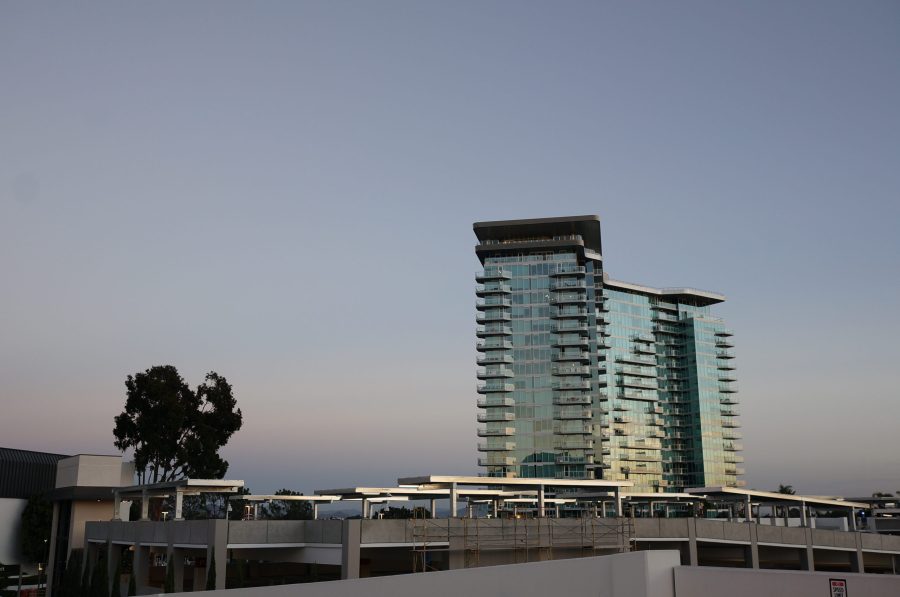COVID-19 cases are once again rising in San Diego, with the number of new cases increasing drastically from 409 cases in the week of April 26 to 1,579 new cases in the last week alone. As of May 18, this brings the total number of confirmed COVID-19 cases in the county to 775,369. Correspondingly, the rolling 14-day average percentage of positive cases among tests are increasing as well, jumping from 3% of tests reported through April 26 to nearly 6% in the most recent two weeks.
Furthermore, the actual number of positive cases is likely higher than reported, as at-home rapid antigen tests are more accessible, and becoming more common.
The number of COVID-19 hospitalizations has also been on the rise. As of May 24, 180 patients were hospitalized for COVID-19, increasing 30.4% from 138 patients on May 19. According to the Patch, 21 of these hospitalized patients were being treated in intensive care. The number of available hospital beds has also decreased to 218.
As of May 27, San Diego County’s COVID community transmission risk category has shifted to medium-risk, which means that immunocompromised individuals should consider further protective measures, including wearing a mask in public. Speaking to NBC San Diego, Cameron Kaiser, the county deputy public health officer, urged individuals to take further precautions.
“Spread of the virus has increased in recent weeks and we should step up individual efforts to keep our community safe,” Kaiser said.
UC San Diego has also observed a slight rise in COVID-19 cases. In the week of May 9, there were 344 new student COVID-19 cases, including students living both on and off campus.The following week of May 16, this jumped by 35.7%, leading to 467 new cases. This brings the total number of UCSD student COVID-19 cases to 8,980 since March 1, 2020.
With 95% of UCSD classes remaining in-person, UC San Diego requires masking in all indoor classroom and instructional settings, clinical areas, and on university transportation. In addition, students must still be masked in all areas of their residential unit, including common areas, elevators, and lobbies. While the guest policy for on-campus students was lifted temporarily, it was quickly reinstated upon the rise in cases. Students do not need to be masked in their personal bedrooms or in the shower. Masking is highly recommended, but not mandated, in other indoor areas on campus, such as the gyms or libraries.
According to UCSD’s current Face Covering Policy, acceptable face coverings include fabric face masks of at least two layers, surgical masks, and N95 or KN95 masks. Unacceptable face coverings include scarves, ski masks, bandanas, balaclavas, gaiters, collars, turtlenecks, plastic face shields, or a single layer of fabric.
With the rising COVID-19 cases in San Diego, the San Diego Unified School District has announced to parents that indoor masking may be reinstated in some schools, if certain COVID-19 thresholds are met. For instance, indoor masking will be required if 10% or more of the student population is absent each day due to illness in the span of three consecutive days.
Assistant Director of University Communications Erika Johnson wrote in an email to The UCSD Guardian that the university has no plans at the moment to tighten masking regulations. Instead, UCSD will continue to monitor the situation.
“At this time, there are no plans to re-establish more restrictive masking mandates for common areas on campus,” Johnson wrote. “As always, our medical and public health experts will continue to monitor campus, county and national public health trends and provide leading-edge data and analyses, all of which helps guide our decision-making. Our campus will also continue to rely on a variety of tools and mitigation strategies that will help us respond effectively and efficiently to real-time conditions. It is this informed, flexible approach that allows us to more swiftly respond to public health conditions, such as calling for increased masking and testing during viral surges, and has proven to be extremely effective throughout the pandemic.”
Johnson also explained that the university aims to keep students, faculty and staff informed of the COVID-19 situation.
“Our goals are to inform and educate the campus community on the current risk levels and provide recommendations on ways to help keep you and your loved ones healthy,” Johnson said.
For more information about how to stay safe during the COVID-19 pandemic, students can visit the Return to Learn website to learn more about the vaccine mandate, exposure and contact tracing, and COVID-19 testing and screening. UCSD continues to offer free COVID-19 testing and vaccination and provides supplies such as masks to individuals and departments who need them.
Artwork courtesy of Althea Tien for The UCSD Guardian.















Emma • Jul 13, 2022 at 2:04 am
This only says that the pandemic has not disappeared anywhere, do not forget about the safety of your health. There is a lot of useful information on this subject here https://help-center.pissedconsumer.com/covid-19-mask-optional-policy-monkeypox-how-to-stay-safe/